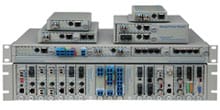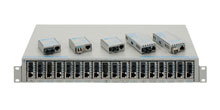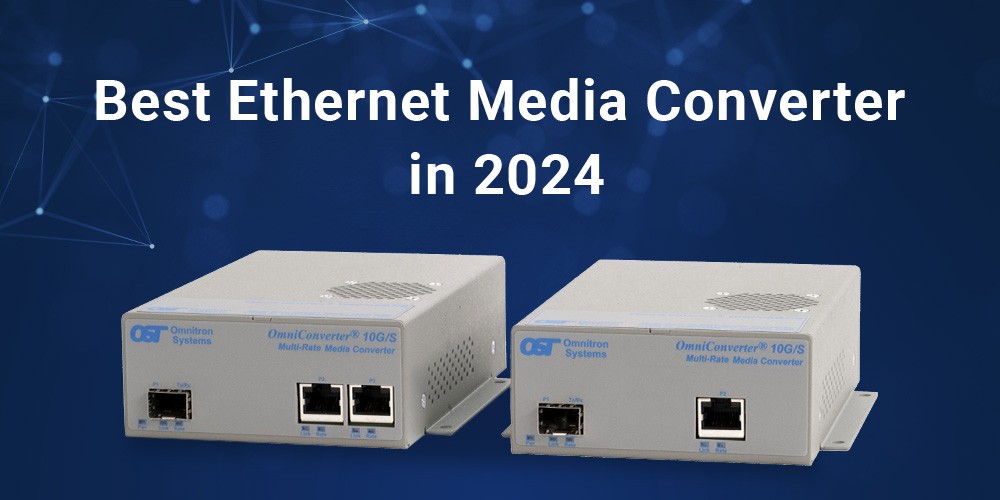- Products
- PoE Media Converters and Switches
- Ethernet & PoE Switches Product Selector
- Multi-Gigabit Ethernet and PoE Switches
- PoE PSE Commercial Switches
- PoE PSE Industrial Fiber Switches
- PoE Industrial Copper Extenders
- PoE Powered Media Converters
- PoE PSE Media Converters
- PoE Extenders & Injectors Product Selector
- Pluggable Transceivers Product Selector
- Single Pair PoE Products
- Product Lines

- iConverter Managed Multi-service Platform
- Copper to Fiber Media Converters
- Ethernet Media Converters
- 10 Gigabit Copper-to-Fiber
- 10/100/1000 Copper to 10 Gigabit Fiber
- 10/100/1000 Copper-to-Fiber with Integrated Management
- 10/100/1000 Industrial Copper-to-Fiber with Integrated Management
- 10/100/1000 Copper-to-Fiber with VLAN
- 10/100/1000 Dual Media Converter with VLAN
- Gigabit Copper-to-Fiber
- 10/100 Copper-to-Fiber with Integrated Management
- 10/100 Industrial Copper-to-Fiber with Integrated Management
- 10/100 Copper-to-Fiber with VLAN
- 10/100 Copper-to-Fiber
- Fast Ethernet Copper-to-Fiber
- Fast Ethernet Redundant Links
- 10Mbps Copper-to-Fiber
- 10Mbps Copper to Coax
- TDM Media Converters
- Serial Media Converters
- Ethernet Media Converters
- Fiber to Fiber Media Converters
- 10 Gigabit Fiber-to-Fiber Converter and Transponder
- 10 Gigabit Industrial Converter and Transponder
- SFP-to-SFP Fiber Converter and Transponder
- SFP-to-SFP Industrial Fiber Converter and Transponder
- Gigabit Fiber to-Fiber with 3 Rs
- 100/1000 Fiber-to-Fiber with 3 Rs
- Gigabit Fiber-to-Fiber
- Fast Ethernet Fiber-to-Fiber with 3 Rs
- Fast Ethernet Fiber-to-Fiber
- OC-3/STM-1 Fiber-to-Fiber
- OC-12/STM-4 Fiber-to-Fiber
- Carrier Ethernet Network Interface Devices
- CE 2.0 - 10G Demarcation NID
- CE 2.0 - 10/100/1000 Mult-port NID
- CE 2.0 - 10/100/1000 Mult-port NID with PoE
- CE 2.0 - 10/100/1000 8-Port NID
- CE 1.0 Service OAM - 10/100/1000 NID
- CE 1.0 Link OAM - 10/100/1000 Copper-to-Fiber NID
- CE 1.0 Link OAM - 10/100 Copper-to-Fiber NID
- CE 1.0 Link OAM - Gigabit Fiber-to-Fiber NID
- CE 1.0 Link OAM - Fast Ethernet Fiber-to-Fiber NID
- CWDM Multiplexers
- T1/E1 Multiplexers
- Ethernet Switch Modules
- Management System
- Chassis Options

- 1-Module Industrial Chassis

- RuggedNet Industrial Switches and Extenders
- Industrial PoE PSE Fiber Switches
- Multi-Gigabit Managed Industrial PoE+/BT Switches
- Multi-Gigabit Unmanaged Industrial PoE+/BT Switches
- 10G Managed 802.3bt PoE Switches
- 10G Unmanaged 802.3bt PoE Switches
- 10G Managed PoE+ Switches
- 10G Unmanaged PoE+ Switches
- 1G Managed PoE+ Switches
- 1G Unmanaged PoE+ Switches
- 1G Unmanaged 802.3bt PoE Switches
- 1G Managed 802.3bt PoE Switches
- Industrial SPE Switches
- Industrial Ethernet Switches
- Industrial PoE Copper Extenders
- Industrial Power Supplies

- OmniConverter Media Converter, Switches and Extenders
- PoE PSE Media Converters
- 10G Multi-Gigabit / Multi-Rate PoE Media Converter
- 10G Multi-Gigabit / Multi-Rate Media Converter
- 10/100 Multi-port PoE+ Media Converter
- 10/100 PoE+ Media Converter
- 10/100/1000 Multi-Port PoE+ Media Converter
- Industrial 10/100/1000 Multi-Port PoE+ Media Converter
- 10/100/1000 PoE+ Media Converter
- 10/100/1000 PoE++ 60W-100W Media Converter
- Industrial 10/100 Multi-port PoE+ Media Converter
- 1U Rack-Mount Shelf
- PoE PSE Compact Switches
- Multi-Gigabit Managed PoE+/BT Switches
- Multi-Gigabit Unmanaged PoE+/BT Switches
- 10G Managed 802.3bt PoE Switches
- 10G Unmanaged 802.3bt PoE Switches
- 10G Managed PoE+ Switches
- 10G Unmanaged PoE+ Switches
- 1G Managed PoE+ Switches
- 1G Unmanaged PoE+ Switches
- 1G Managed 802.3bt PoE Switches
- 1G Unmanaged 802.3bt PoE Switches
- Ethernet Switches
- Single Pair Ethernet (SPE)
- PoE Copper Extenders
- PoE Injectors

- miConverter Unmanaged Miniature Media Converters
- 10/100/1000 Copper-to-Fiber
- Industrial 10/100/1000 Copper-to-Fiber
- 10/100/1000 Ultra-Compact Copper-to-Fiber
- Gigabit Copper-to-Fiber
- 10/100/1000 Copper-to-Fiber PoE Powered
- 10/100 Copper-to-Fiber
- 10/100 Ultra-Compact Copper-to-Fiber
- 10/100 Copper-to-Fiber PoE Powered
- 18-Module Chassis
- Industrial 10/100 Copper-to-Fiber PoE Powered

- FlexSwitch Compact Switches
- Solutions
- Company
- Support
- How to Buy
Best Ethernet Media Converter for 2024

An Ethernet media converter is a device that converts from one type of network cable to another, such as fiber optic to copper. If your building has a mix of different cabling, you will need an Ethernet media converter to connect these devices.
It is easy to choose the most suitable Ethernet media converter if you understand the questions that need to be answered before buying one.
The first question is, which type of Ethernet media converter do you need? The most common types are standalone and chassis converters. A standalone converter has its power source and can be installed anywhere in your network, while a chassis-based model is designed to be mounted in an equipment rack with other hardware.
Managed or Unmanaged Ethernet Media Converter
Decide whether you want a managed or unmanaged Ethernet media converter. If you are still deciding on which type of media converter to choose, consider choosing a managed version. This is because managed media converters have a built-in web server that allows you to configure and manage them remotely. However, this comes at a price: unmanaged devices are generally cheaper than their managed counterparts.
What is your maximum distance requirement?
The maximum distance requirement depends on the maximum cable length used to connect your Ethernet media converter to a device. The type of Ethernet media converter will determine the maximum distance that you can use with your setup.
The distance between devices should determine the type of cabling to be used. If the distance between your source and destination is less than 50 meters (164 feet), then the UTP cable should be used in both directions. In this case, both ends must be appropriately terminated using RJ45 connectors or punch-down blocks to work at their full potential.
Fiber optic cable is recommended for distances over 100 meters as it can run faster than copper with less interference. Suppose a fiber optic converter is unavailable, and you need to extend your network connection via copper cable. In that case, you will need to extend the distance over a copper cable with the help of Ethernet extenders or the uplink port of your network switch and run a daisy chain application.
Choosing the Right Media Converter Connector Type
When it comes to Ethernet media converters, the choice of connector type is a pivotal consideration that directly influences the physical connection between the converter and the fiber-optic cables. The connector type, whether SC, ST, LC, or SFP, plays a crucial role in determining the efficiency and reliability of the network connection. Each connector type has distinct characteristics, affecting signal loss, ease of installation, and compatibility with different fiber-optic cables.
Fiber Type Compatibility
Ethernet media converters use multi-mode or single-mode fiber optic cables to transmit data. Multi-mode fiber is generally used for shorter distances (up to 550 meters) and is less expensive. In comparison, single-mode fiber is preferred for longer distances (up to 140 kilometers) and offers higher bandwidth capabilities. Identify the distance between your devices and choose the appropriate fiber type accordingly.
Choosing the Operating Temperature Range
Ethernet media converters are designed to operate within a specific temperature range. Indoor media converters are typically rated for operation in temperature ranges between 0°C to 50°C, while industrial media converters can withstand harsher environments with temperatures between -40º to 75ºC and -40º to 85ºC. Choosing the right temperature range ensures longevity and reliability.
Powering Options
The choice of powering option depends on the specific requirements and available resources at the installation location. AC and DC power options provide traditional and reliable sources, while USB is convenient for low-power applications. On the other hand, PoE simplifies installation, reduces cable clutter, and is particularly advantageous in scenarios with limited traditional power sources. Understanding the powering options ensures that the chosen media converter aligns seamlessly with the power infrastructure of your network, contributing to a more streamlined and efficient connectivity solution.
PoE Capabilities
Power over Ethernet (PoE) capabilities allow the transmission of both power and data over a single Ethernet cable, simplifying the deployment of devices like cameras and access points. Incorporating PoE media converters into your network infrastructure ensures seamless power and data transmission and aligns with the growing trend toward efficient and simplified connectivity solutions.
The Best Media Converter for 2024: OmniConverter Multi-Gigabit / Multi-Rate Ethernet Media Converter
The OmniConverter Multi-Gigabit / Multi-Rate Ethernet media converter features one 1/10G SFP/SFP+ uplink port and one or two multi-rate RJ-45 user ports. The RJ-45 user ports support multi-gigabit/multi-rate speeds of 10Mbps, 100Mbps, 1Gbps, 2.5Gbps, 5Gbps, and 10Gbps, supporting frame sizes up to 10,240 bytes. The Small Form Pluggable (SFP) transceiver receptacle port supports 10/100/1000BASE-T, 1000BASE-T, 2.5BASE-T, 5GBASE-T, and 10GBASE-T copper transceivers and 1G and 10G multi-mode or single-mode fiber, dual or single-fiber transceivers in standard, CWDM and DWDM wavelengths.
The multi-rate Ethernet media converter provides high-speed network distance extension with fiber optic cabling. This compact Ethernet media converter has a flexible mounting option and can be tabletop-mounted, wall-mounted or DIN-rail mounted using an optional DIN-rail mounting clip (8251-0). It can also be mounted on a 1U 19" rack-mount shelf.
Omnitron Systems is a privately held company headquartered in Irvine, California. All its products are manufactured in the US to ensure they are high-quality and are TAA compliant, BAA compliant, and NDAA compliant, and manufactured with respect for human rights. The multi-rate Ethernet media converter has a lifetime warranty and free 24/7 technical support.
Conclusion
There are different types of Ethernet media converters in the market and choosing the most suitable one depends on your needs. When it comes to selecting a switch or an Ethernet converter, you must consider the following:
Why do you need this?
How much bandwidth do you need?
What network topology do you have (hub-and-spoke / star or full mesh)?
However, after reading this article, we hope you now have a better understanding of what to look for when buying one. With this guide, you can decide which Ethernet media converter is best for your networking needs.
If you have any future questions about Ethernet media converters or other network switches or want to get pre-sale support, give us a call; we are available 24/7 to answer your questions. Call us now to get pre-sale support.
At Omnitron, we understand that network design is essential to any successful IT infrastructure. That's why we offer free network design services to our customers. Our experienced network engineers will collaborate with you to develop a comprehensive design that meets your unique needs, budget and time limit. Get a quote for free network design.









